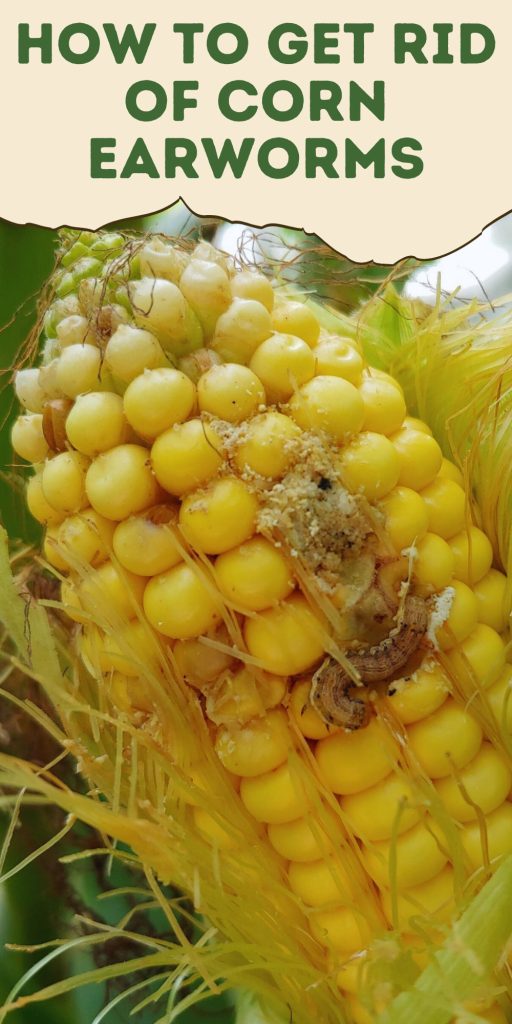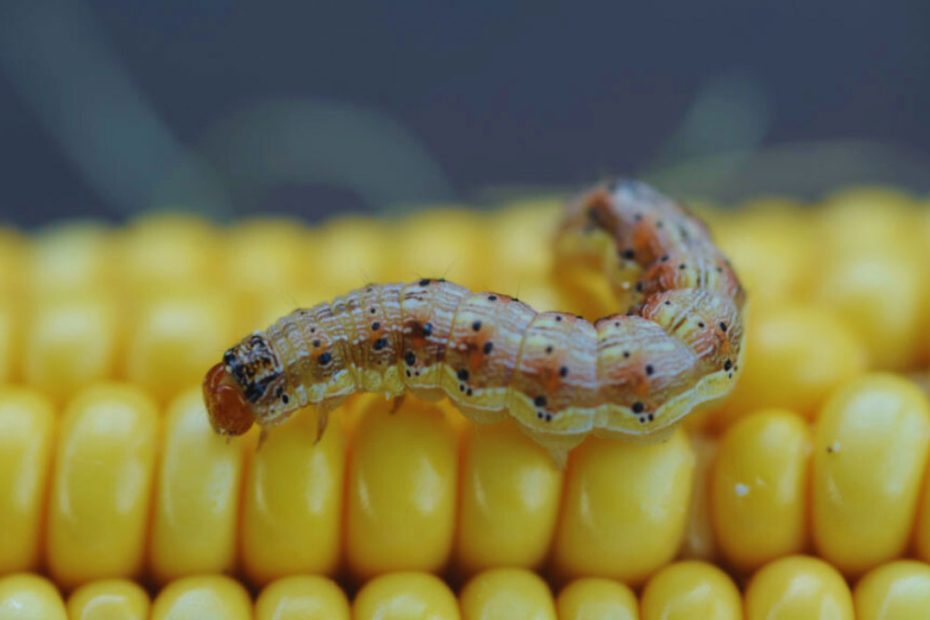Corn earworms can wreak havoc on your garden, turning your bountiful corn harvest into a frustrating mess. These pesky pests burrow into the ears of corn, feeding on the kernels and leaving behind a trail of destruction. If you’re tired of seeing your hard work go to waste, it’s time to take action.
In this guide, you’ll discover effective strategies to get rid of corn earworms and protect your crops. From natural remedies to preventive measures, we’ve got you covered. Say goodbye to damaged corn and hello to a healthier, more productive garden.
Key Takeaways
- Understand Corn Earworms: Corn earworms (Helicoverpa zea) are among the most damaging pests to corn crops, feeding on kernels and affecting gardens and agricultural fields alike.
- Identify Signs of Infestation: Early detection is crucial. Look for damaged kernels, frayed silks, frass (insect waste), and larvae inside corn ears.
- Natural Pest Control Methods: Utilize beneficial predators like lacewings, ladybugs, and parasitic wasps. Apply organic sprays such as neem oil, Bacillus thuringiensis (Bt), and diatomaceous earth.
- Chemical Control Solutions: Insecticides like pyrethroids, spinosad, and carbaryl can be effective but should be used with caution and adherence to safety guidelines.
- Preventative Measures: Crop rotation and proper garden maintenance, including weed control and soil tillage, can disrupt earworm life cycles and reduce infestations.

Understanding Corn Earworms
Corn earworms, or Helicoverpa zea, are among the most damaging pests to corn crops. Affecting gardens and agricultural fields alike, these pests tunnel into the corn ears and feed on the kernels, leading to significant crop loss if untreated. Comprehending their life cycle, appearance, and behavior is crucial for effective control.
Life Cycle
Corn earworms undergo a complete metamorphosis consisting of four stages:
- Egg: Female moths lay eggs on corn silks. Eggs hatch within 2-10 days.
- Larva: After hatching, larvae begin feeding on corn kernels. This stage lasts 2-4 weeks.
- Pupa: Larvae drop to the ground and pupate in the soil. Pupal stage lasts 10-25 days.
- Adult: Pupae emerge as moths and restart the cycle, potentially resulting in multiple generations per year.
Appearance
- Egg: Small, white or cream-colored, usually found on corn silks.
- Larva: Ranges from light green to brown, marked with dark stripes and distinct tiny spines.
- Pupa: Brown and cylindrical, hidden in soil during this phase.
- Adult: Moths are light to dark brown with a wingspan of about 1.5 inches.
Behavior
Corn earworms display specific behaviors making them particularly destructive:
- Feeding Habits: Larvae feed on corn kernels, leading to mold growth and secondary infections.
- Host Plants: Besides corn, they attack tomatoes, cotton, and various other vegetables.
- Nocturnal Activity: Adults are most active at night, laying eggs on fresh corn silks.
Identification Tips
Early detection paves the way for effective control measures:
- Inspect Corn Silks: Look for small, cream-colored eggs on corn silks.
- Identify Larvae: Check for caterpillars feeding inside corn ears, especially during the growing season.
- Monitor Moths: Use traps to detect adult moths, indicating the presence of eggs and larvae.
Understanding these key aspects of corn earworms empowers you to carry out targeted and timely measures to protect your crops.
Identifying Corn Earworm Infestation
Corn earworms can devastate your crop if left unchecked. Early identification is crucial for managing these pests and safeguarding your plants.
Signs and Symptoms
Identifying corn earworm infestation involves observing specific signs and symptoms on your corn plants. Here are key indicators:
- Damaged Kernels: Look for chewed kernels around the tips of corn ears. Earworms often start feeding at the ear tip.
- Silk Damage: Noticeable signs include frayed, cut, or missing silks. Earworms feed on silks before moving into the ear.
- Frass: Check for dark, sawdust-like waste (frass) around the ear tips. This byproduct of feeding is a clear sign of earworm activity.
- Larvae Presence: Inspect the corn ears’ interior for yellowish-green larvae with dark stripes. They are usually found in the tips where they feed on developing kernels.
Life Cycle of Corn Earworms
Understanding the life cycle of corn earworms helps in identifying and managing infestations. Here’s a breakdown of each stage:
- Egg Stage: Female moths lay small, cream-colored eggs on corn silks. The eggs hatch in about 2 to 10 days, depending on temperature.
- Larva Stage: The larvae, which cause the most significant damage, emerge from the eggs. These larvae are about 1 to 1.5 inches long and can vary in color. This stage lasts 2 to 4 weeks as they feed on the corn.
- Pupa Stage: After feeding, larvae drop to the ground and burrow into the soil to pupate. This stage, lasting about 12 days, leads to the metamorphosis into moths.
- Adult Moth Stage: Adult moths, light to dark brown in color, emerge from the pupae. They are nocturnal and seek out corn plants to lay eggs, starting the cycle again.
By recognizing the signs of corn earworm infestation and understanding their life cycle, you can take proactive steps to protect your plants and ensure a healthier harvest.
Natural Methods to Eliminate Corn Earworms
Natural methods offer effective and eco-friendly means to protect your corn crops from corn earworms. These strategies help manage pests while maintaining the balance of your garden ecosystem.
Beneficial Predators
Leveraging beneficial predators is a powerful way to control corn earworm populations:
- Lacewings: These insects consume corn earworm eggs and larvae. Introduce lacewings into your garden to naturally reduce pest numbers.
- Ladybugs: Known for feeding on soft-bodied insects, ladybugs can help control small larvae populations. Release them near corn plants.
- Parasitic Wasps: Species like Trichogramma wasps lay their eggs inside corn earworm eggs, leading to natural reduction. You can purchase these wasps and release them in your garden.
Encouraging these predators can prevent infestations and support a healthier garden environment.
Organic Sprays and Solutions
Organic sprays and solutions provide a non-toxic alternative to chemical pesticides. Here are some effective choices:
- Neem Oil: A natural pesticide that disrupts the life cycle of corn earworms. Mix 2 tablespoons of neem oil with 1 gallon of water and spray on corn plants, targeting silks and ears.
- Bacillus thuringiensis (Bt): A bacterium that kills larvae when ingested. Apply Bt spray directly to corn foliage and silks for targeted action.
- Diatomaceous Earth: A natural powder that dehydrates and kills larvae. Dust it lightly around the base of corn stalks and on silks.
These organic solutions help control corn earworms without harming beneficial insects or the environment. For best results, apply them early in the growing season and reapply after rain.
Chemical Solutions for Corn Earworms
Combating corn earworms can be challenging, but chemical solutions offer effective control measures. Use these methods as part of an integrated pest management plan to minimize crop damage.
Insecticides
Various insecticides target corn earworms, ensuring significant reduction of their populations:
- Pyrethroids: Such as cypermethrin and bifenthrin; they are effective but may impact non-target species.
- Spinosad: Derived from natural soil bacterium, it targets nerve cells and is less toxic to beneficial insects.
- Carbaryl: A broad-spectrum insecticide that provides quick control but requires careful handling.
- Permethrin: Targets larval stages for rapid action but with potential residue issues.
Application Tips and Safety
When using insecticides, adherence to safety protocols and application guidelines is crucial. Follow these tips:
- Timing: Apply during early larval stages for maximum efficiency.
- Dosage: Use the recommended dosage to avoid resistance and non-target harm.
- Equipment: Ensure sprayers and applicators are clean and functioning properly.
- Protective Gear: Wear gloves, masks, and long sleeves to minimize exposure.
- Weather Conditions: Apply during calm weather to prevent drift and maximize coverage.
- Re-Entry Interval: Respect the safe re-entry period post-application to protect yourself and others.
Attention to detail and adherence to recommended practices enhance the effectiveness and safety of using chemical solutions against corn earworms.
Preventative Measures
Getting rid of corn earworms is crucial for healthy corn crops. Preventative measures minimize infestations and protect your plants.
Crop Rotation
Crop rotation involves changing the types of crops grown in a particular area each season:
- Disrupts Life Cycles: Rotating crops breaks the life cycle of pests by depriving larvae of their preferred host plants.
- Reduces Soil Pests: Different crops attract different pests, reducing the chance for corn earworms to become established.
- Improves Soil Health: Varying crops enhances soil structure and fertility, making it less susceptible to pests.
Example: Rotate corn with legumes or cover crops to keep corn earworm populations in check.
Proper Garden Maintenance
Maintaining a clean and healthy garden deters corn earworms:
- Weed Control: Weeds can host corn earworm larvae, so regularly remove them.
- Debris Removal: Clearing plant debris prevents pests from overwintering in your garden.
- Soil Tillage: Tilling the soil disrupts pupae and reduces pest numbers before planting season.
- Regular Inspections: Frequently check your plants for signs of pests and take prompt action.
Example: Inspect corn ears and silks weekly for signs of larvae or eggs. Remove affected parts to control the spread of pests.
Conclusion
Taking proactive steps to manage corn earworms is essential for protecting your corn crops and ensuring a healthy harvest. By understanding their life cycle and identifying early signs of infestation, you can carry out effective strategies to control these pests. Utilizing natural remedies and beneficial predators helps maintain your garden’s ecosystem while organic sprays provide non-toxic alternatives. If necessary, chemical solutions can be integrated safely with proper precautions.
Remember, consistent garden maintenance and preventive measures like crop rotation and regular inspections play a crucial role in minimizing infestations. With these approaches, you’ll be well-equipped to keep corn earworms at bay and enjoy a bountiful harvest.
Frequently Asked Questions
What are corn earworms?
Corn earworms (Helicoverpa zea) are pests that feed on corn kernels, causing significant damage to corn crops. They undergo four stages in their life cycle: egg, larva, pupa, and adult.
How can I identify corn earworms?
Corn earworms lay cream-colored eggs on corn silks. The larvae are yellowish-green and damage kernels. Adult moths are light to dark brown. Key signs include damaged kernels, frayed or missing silks, and dark frass (waste).
How do corn earworms affect corn crops?
Corn earworms feed on the kernels, leading to reduced yields and compromised crop quality. Their feeding habits can severely damage corn ears, affecting overall garden productivity.
What natural methods can I use to eliminate corn earworms?
Natural methods include introducing beneficial predators like lacewings, ladybugs, and parasitic wasps. Organic sprays such as neem oil, Bacillus thuringiensis (Bt), and diatomaceous earth are also effective.
Are there organic solutions to control corn earworms?
Yes, organic solutions like neem oil, Bacillus thuringiensis (Bt), and diatomaceous earth can manage corn earworms without harming beneficial insects or the environment. Early application in the season is recommended.
What chemical insecticides are recommended for corn earworms?
Chemical insecticides like pyrethroids, spinosad, carbaryl, and permethrin can control corn earworms. Proper application, timing, and safety protocols are essential for effectiveness and safety.
How can I apply chemical treatments safely?
Use protective gear, maintain equipment, and follow dosage instructions. Apply treatments under appropriate weather conditions to avoid drift and enhance effectiveness.
What preventive measures can I take to protect my corn crops?
Use crop rotation to disrupt life cycles, control weeds, remove debris, till the soil, and inspect corn regularly for early signs of infestation, such as damaged kernels and frayed silks.
How effective is crop rotation in managing corn earworms?
Crop rotation helps by disrupting the life cycles of corn earworms, reducing soil pest populations, and improving soil health. Rotating corn with legumes is a commonly recommended practice.
